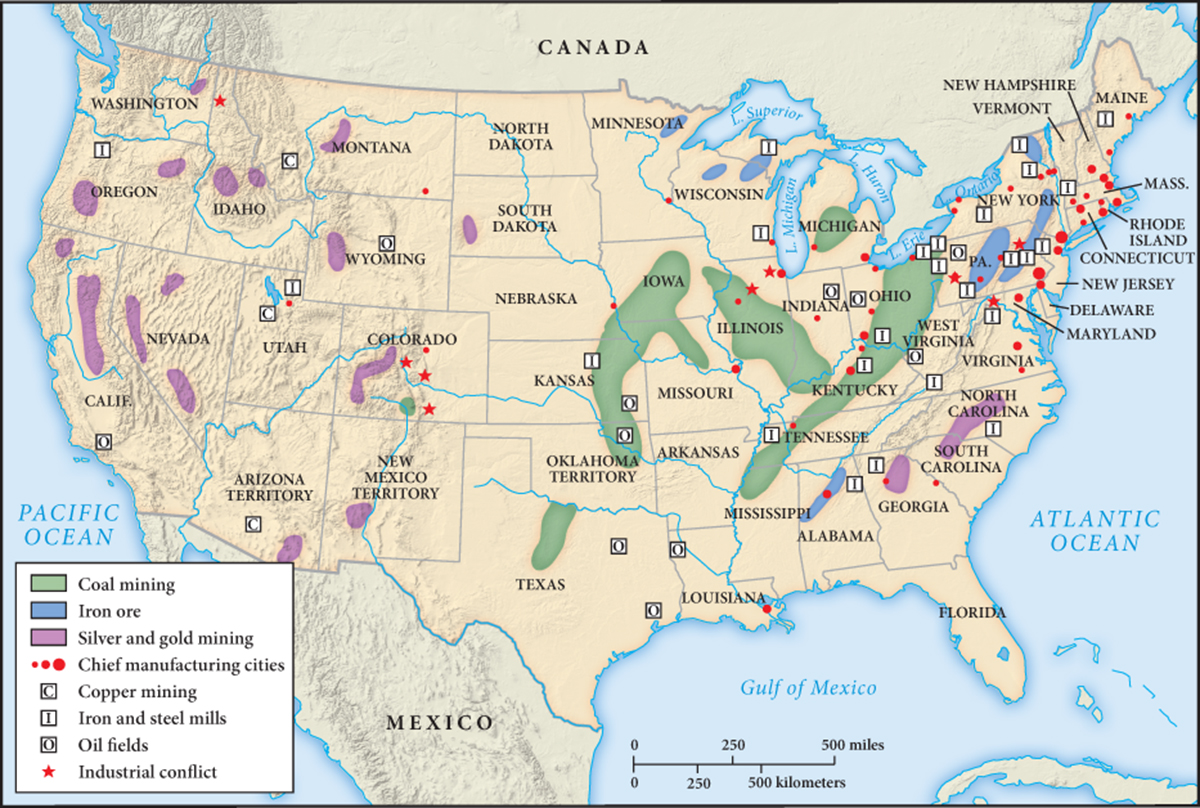The United States: Industrialization without Socialism
American industrialization began in the textile factories of New England during the 1820s but grew explosively in the half century following the Civil War (1861–

Comparison
What were the differences between industrialization in the United States and that in Russia?
As in other second-
The United States also pioneered techniques of mass production, using interchangeable parts, the assembly line, and “scientific management” to produce for a mass market. The nation’s advertising agencies, Sears Roebuck’s and Montgomery Ward’s mail-
Explanation
Why did Marxist socialism not take root in the United States?
Nevertheless, well before the first Model T rolled off the assembly line, serious social divisions of a kind common to European industrial societies mounted. Preindustrial America had boasted of a relative social equality, quite unlike that of Europe, but by the end of the nineteenth century a widening gap separated the classes. In Carnegie’s Homestead steel plant near Pittsburgh, employees worked every day except Christmas and the Fourth of July, often for twelve hours a day. In Manhattan, where millions of European immigrants disembarked, many lived in five-
As elsewhere, such conditions generated much labor protest, the formation of unions, and strikes, sometimes leading to violence. In 1877, when the eastern railroads announced a 10 percent wage cut for their workers, strikers disrupted rail service across the eastern half of the country, smashed equipment, and rioted. Both state militias and federal troops were called out to put down the movement. Class consciousness and class conflict were intense in the industrial America of the late nineteenth and early twentieth centuries.
Unlike in many European countries, however, no major political party emerged in the United States to represent the interests of the working class. Nor did the ideas of socialism, especially those of Marxism, appeal to American workers nearly as much as they did to European laborers. At its high point, the Socialist Party of America garnered just 6 percent of the vote for its presidential candidate in the 1912 election, whereas socialists at the time held more seats in Germany’s Parliament than any other party. Even in the depths of the Great Depression of the 1930s, no major socialist movement emerged to champion American workers. How might we explain this distinctive feature of American industrial development?
One answer lies in the relative conservatism of major American union organizations, especially the American Federation of Labor. Its focus on skilled workers excluded the more radical unskilled laborers, and its refusal to align with any party limited its influence in the political arena. Furthermore, massive immigration from Europe, beginning in the 1840s, created a very diverse industrial labor force on top of the country’s sharp racial divide. This diversity contrasted sharply with the more homogeneous populations of many European countries. Catholics and Protestants; whites and blacks; English, Irish, Germans, Slavs, Jews, and Italians—
But political challenges to the abuses of capitalist industrialization did arise. In the 1890s, among small farmers in the U.S. South, West, and Midwest, “populists” railed against banks, industrialists, monopolies, the existing money system, and both major political parties, all of which they thought were dominated by the corporate interests of the eastern elites. More successful, especially in the early twentieth century, were the Progressives, who pushed for specific reforms, such as wages-